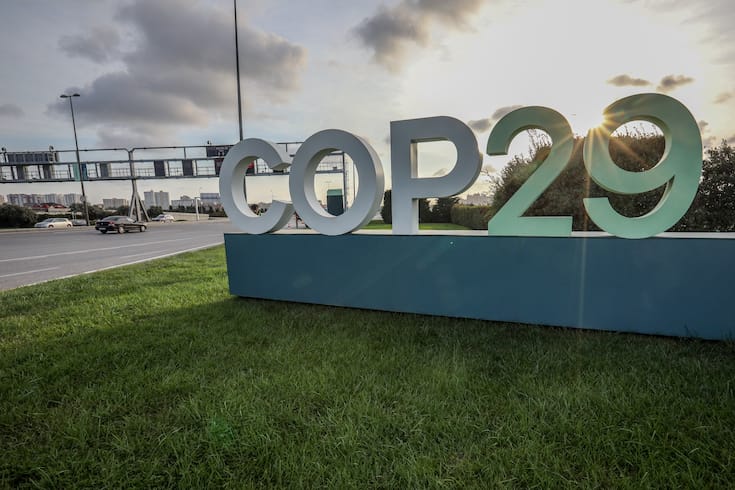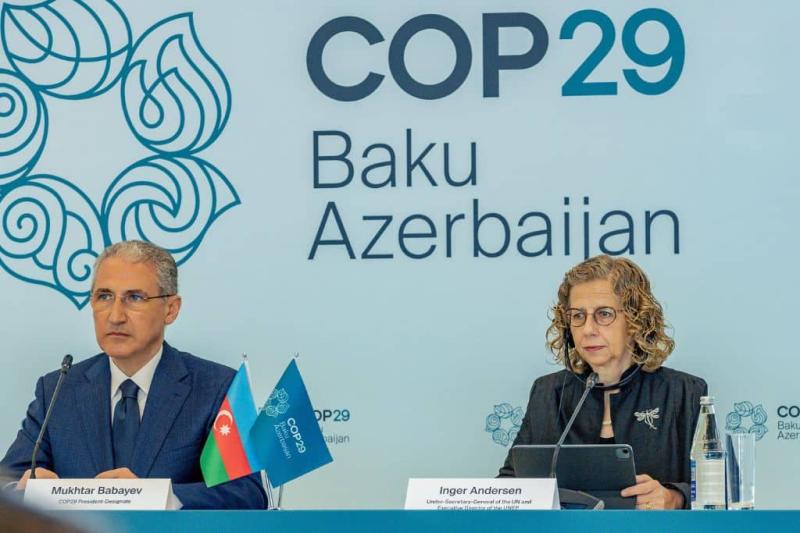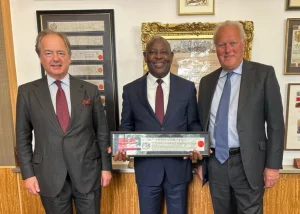
- Misleading Climate Finance: MDBs Face Calls for Accountability at COP29;
The dialogue surrounding climate finance is complex and ever-evolving, with many issues still unresolved.
At the recent African Climate Summit in Nairobi, discussions focused on the financial architecture needed to support climate initiatives, culminating in the Nairobi Declaration.
 Yet, as world leaders gather in Baku for COP29, the urgency of climate finance remains a pressing concern, drawing attention from scientists, lobbyists, activists, and government officials alike.
Yet, as world leaders gather in Baku for COP29, the urgency of climate finance remains a pressing concern, drawing attention from scientists, lobbyists, activists, and government officials alike.
Multilateral Development Banks (MDBs) are positioning themselves as key players in delivering climate financing, especially as they prepare to take on a leading role in achieving the new climate finance goals that are still under negotiation at COP29.
However, a recent study by the international organization Recourse, unveiled during the UN climate summit, sheds light on some troubling realities about the effectiveness and accountability of these financial institutions.
Recourse’s research indicates a stark picture of the climate finance landscape, highlighting the challenges faced by various organizations across the globe.
 According to MDBs, their climate finance reached a record $125 billion in 2023, more than double the amount provided in 2019, when they pledged to increase their climate funding at the UN Secretary-General’s Climate Action Summit.
According to MDBs, their climate finance reached a record $125 billion in 2023, more than double the amount provided in 2019, when they pledged to increase their climate funding at the UN Secretary-General’s Climate Action Summit.
Of this total, $74.7 billion was directed towards low- and middle-income economies, with 67% earmarked for climate change mitigation and 33% for adaptation efforts. In contrast, high-income economies received $50.3 billion, with an overwhelming 94% allocated for mitigation.
Insights from Recourse’s Research
Recourse, guided by its mission to ensure financial accountability for the protection of people and the planet, provides a detailed breakdown of climate finance distribution worldwide.
The analysis reveals that Europe received the lion’s share of funding, accounting for 44%, while the Asia-Pacific region received 21%, and Sub-Saharan Africa lagged behind at just 14%.
Petra Kjell Wright, the report’s author and Campaigns Manager at Recourse, emphasizes the need for caution when interpreting these figures.
Many of the projects funded by MDBs include investments in fossil fuels, human rights violations, and environmentally damaging initiatives. This is especially concerning for countries in the Global South, particularly in Africa, which bear the brunt of climate change impacts.
A significant portion of MDB climate finance has been funneled into what can be termed “problematic projects.” These include highly polluting waste-to-energy plants, large-scale hydropower projects, and mining operations for critical minerals. Alarmingly, 70% of this funding comes in the form of loans, rather than grants, exacerbating the debt burdens of already vulnerable nations.
“This raises serious questions about whether the MDBs’ current approach genuinely helps address climate change for the most vulnerable people and places,” Wright asserts.
 Examples of Controversial Projects
Examples of Controversial Projects
Several projects funded by MDBs exemplify these concerns:
- Greater Malé Waste-to-Energy Project (Maldives): Classified as 94-100% climate finance by the Asian Development Bank (ADB) and the Asian Infrastructure Investment Bank (AIIB), this project emits hazardous fumes and has increased waste due to the need for imported waste to sustain operations.
- Antalya Airport Expansion (Turkey): This project, which will double the airport’s capacity and significantly increase carbon emissions, received $153 million from the AIIB, classified as 48% climate finance.
- Upper Trishuli-1 Hydropower Project (Nepal): This project has marginalized local Indigenous communities and failed to adhere to consultation processes while being counted as climate finance by multiple banks.
- Unique Meghnaghat Gas Power Plant (Bangladesh): Despite its long-term carbon implications, this plant was partially classified as climate finance by the AIIB.
- Climate Smart Mining for a New Climate Economy (Mongolia):Over 60 civil society organizations have flagged this project for potential health impacts and violations of Indigenous rights, yet it has been counted as climate finance.

The Future of MDBs in Climate Finance
At COP29, MDB representatives discussed their commitment to aligning with the Paris Agreement and transforming climate finance into impactful action. However, critics like Zain Moulvi from the Alternative Law Collective argue that MDB claims of climate leadership are hypocritical.
“They cannot celebrate clean energy investments while continuing to support projects that harm people and nature,” he stated, calling for accountability for past damages.
Sukhgerel Dugersuren from Oyu Tolgoi Watch echoed these sentiments, stressing that the ADB’s classification of harmful mining practices as “climate-smart” is misleading and detrimental to local communities and ecosystems.
Wright concluded with a call for transparency and accountability indicating that tt COP29, the development banks celebrate their role in climate finance, but their research tells a different story—one of distorted figures and finance flowing to the wrong projects in the wrong places.

“To truly align with the Paris Agreement, MDBs must prioritize people’s rights and the health of the planet.”
As the world grapples with the urgent need for effective climate action, the role of MDBs in climate finance remains a topic of heated debate, underscoring the necessity for genuine commitment to sustainable solutions.









